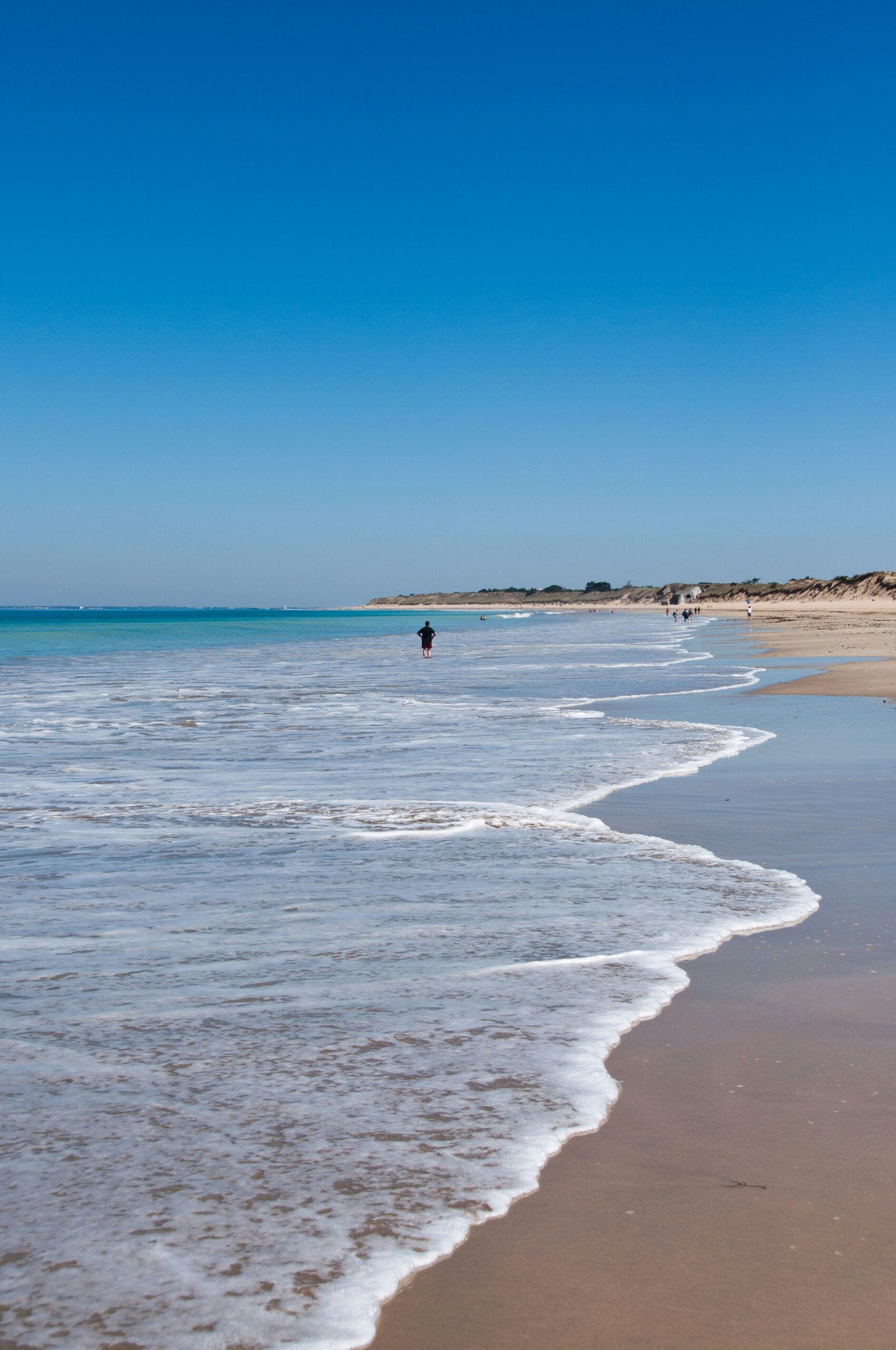Come July and August, irresistible Ile de Ré is where you’ll find half of Paris on their holidays. With absurdly pretty villages, strips of uninterrupted golden fluffy sand, and some freshly-caught (but farcically cheap) seafood, this tiny island epitomizes laid-back French seaside chic.
Sun, sea, sand, salt, and cycles are the five elements that work together to make Ile de Ré so appealing. Even during the annual Parisian invasion, you can still find quiet corners of this exquisite Atlantic outpost if you know where to rummage.
Here’s how first-timers can enjoy their experience on Ile de Ré.
Rent a Bike
The first thing you’ll notice on Ile de Ré is that everyone is on a bicycle. With the island’s highest point being only 19 meters and a 100km network of excellent cycle paths, it makes perfect sense to explore on two wheels. Every village has rental shops offering tandems, electric bikes, trailers for kids (or sometimes dogs), and the classic city bike complete with baskets for your market shopping.
All villages are interconnected by bike lanes, as are almost all beaches. Trails meander through vineyards, glide past fields of wheat and poppies, and weave through pine forests. One of the wilder landscapes is the nature reserve at Lilleau des Niges at the northwestern end, featuring salt pans, marshes, and thousands of birds. Although Ile de Ré is only 30km by 5km, it can take at least two hours to cycle from one end to another—an important consideration if you’re traveling with children.

Top Beaches
Sandy beaches stretch across much of the island’s coast, which curves into a fishhook at its western end—where you want to go to escape the summertime crowds.
The beaches on the southern side are nearer to the main villages and, as a result, attract more visitors. However, outside the July-August holiday period (which starts to calm down from the third week of August), the dozen beaches forming an unbroken sandy chain around the island are surprisingly spacious.
Plage de la Conche des Baleines
Plage de la Conche des Baleines is a long stretch of sand backed by dunes and pine forests, merging into Plage de la Conche and Plage du Lizay. You won’t find ordered rows of rented sun loungers here—just sand and the occasional surf.
Les Portes-en-Ré
Continue to Les Portes-en-Ré for additional beaches, including the sheltered Plage du Trousse Chemise and Plage de la Patache.
Plage de Gros Jonc
For surfers, Plage de Gros Jonc near Le Bois Plage-en-Ré offers gear rental and lessons. If kayaking excites you, consider renting a canoe near the village of Loix for a leisurely journey through the salt marshland.
Dining Options
If you adore fresh seafood, it’s hard to imagine a more delightful way to spend an afternoon than exploring the oyster shacks along Ile de Ré’s western coast. The marshes teem with oysters and mussels, interspersed with salt pans where the island’s prized sea salt is still harvested by hand.
Many oyster producers offer tastings on-site at remarkably low prices—and the equally inexpensive takeaway options may inspire you to test your own shucking skills.
L’Escale du Marais
Look for L’Escale du Marais (Route de Loix) near Le Bois-Plage-en-Ré, where you can sit by a stream indulging in oysters while sipping local crisp white wine for the equivalent price of a large beer in Paris.
Charismatic Villages
St-Martin-de-Ré
The charming capital, St-Martin-de-Ré, is enclosed by protective 17th-century walls, with cafés and restaurants that add a vibrant atmosphere to the picturesque harbor. Wander away from the lively quayside to explore the Vauban-designed citadel fortifications, the lighthouse, and its plentiful parque. Don’t miss the indoor food market, filled with fantastic local produce—seafood, cheeses, meats, and delightful picnic snacks like deep-fried salt cod balls.
La Flotte
A short bike ride away lies La Flotte, St-Martin’s smaller yet equally charming counterpart. Cafés line its quaint harbor, and the village’s sandy beach attracts early-morning cockle pickers when the tide recedes. La Flotte’s food market enchants visitors with stalls tucked beneath medieval porticoes. If cycling, continue east for 10 minutes to discover the atmospheric ruins of the 12th-century Abbaye des Châteliers, a haunting sight amid this flat landscape.
Ars-en-Ré
Antique enthusiasts should venture west to Ars-en-Ré, brimming with bric-a-brac shops and art galleries. Designated as one of France’s most beautiful villages, it also features the island’s largest harbor and a sailing center. Just before reaching the outskirts, you’ll spot the distinctive black-tipped white spire of the 15th-century church, which served as a beacon for sailors prior to the establishment of lighthouses.
View from the Highest Point
At Ile de Ré’s westernmost tip, the 59m-high Phare des Baleines lighthouse has been safely guiding ships around the island’s edge since its construction in 1854. After climbing the 257 spiral steps—admittedly a bit of a workout—you’ll be rewarded with breathtaking views stretching back to mainland France.
At the base stands the Muséede des Baleines, delving into the lighthouse’s history, alongside the Vieille Tour, a former lighthouse from the 17th century that welcomes visitors in the summer months.









